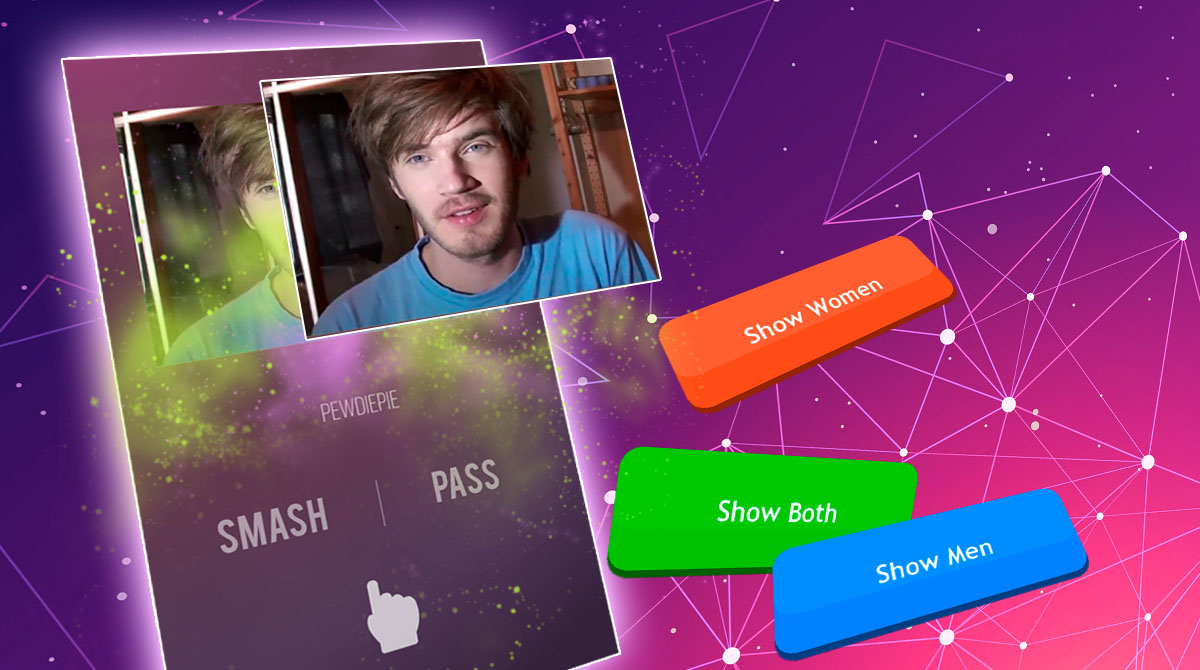Decoding the Smash or Pass Game: Unveiling Its Intricacies
Welcome to the intriguing world of the smash or pass game, a popular social trend that has taken the internet by storm. This game, often played among friends or online communities, involves participants indicating whether they would either “smash” (date or engage romantically) or “pass” (reject) when presented with the option of different individuals. While seemingly simple on the surface, delving deeper into the dynamics of this game unveils a wealth of intricacies and considerations that influence one's decision-making process.
The smash or pass game is not merely about making superficial judgments based on physical appearance; it delves into the realms of personal preferences, societal influences, and individual perceptions of attraction. By exploring the nuances of this game, we aim to uncover the underlying factors that contribute to the choices individuals make when faced with the challenge of deciding whether to smash or pass. Let's embark on a journey of understanding and decoding the complexities that lie beneath the surface of this seemingly straightforward game.
Origins of Smash or Pass
The origins of the smash or pass game can be traced back to social media platforms, where users would post images of individuals and ask their audience whether they would “smash” (meaning they find the person attractive) or “pass” (meaning they do not). This simple concept quickly gained popularity due to its interactive nature and the intrigue surrounding people's preferences and judgments.
The game soon migrated to video content on platforms like YouTube, where creators would film themselves or others reacting to images of different individuals and sharing their “smash” or “pass” decisions. This led to a surge in interest in the game, with viewers eagerly anticipating each new installment to see who would be featured and how the participants would react.
As the smash or pass game continued to evolve, it transcended its initial social media origins and became a widespread phenomenon, with people from all walks of life participating and sharing their opinions. The game's appeal lies in its ability to spark discussions about beauty standards, personal preferences, and the dynamics of attraction, making it a fascinating topic for exploration and analysis.
Impact on Social Media
Social media has provided a platform for the smash or pass game to gain significant traction among users worldwide. The simple yet engaging nature of the game has led to its widespread popularity across various platforms such as Instagram, TikTok, and Twitter. Users participate in the game by sharing posts featuring different individuals and inviting their followers to either “smash” (approve) or “pass” (decline) the person in question, sparking debates and discussions.
One key impact of the smash or pass game on social media is its ability to generate high levels of user engagement and interaction. The game prompts users to express their opinions and preferences openly, leading to lively conversations and debates in the comments section. This increased interaction not only boosts the reach and visibility of the original post but also creates a sense of community among participants, fostering connections and relationships based on shared interests.
Moreover, the smash or pass game has contributed to the blurring of boundaries between entertainment and social interaction on social media platforms. Users engage with the game not just for amusement but also to express their values, preferences, and judgment. The game serves as a form of social currency, allowing individuals to showcase their personality and connect with others based on their responses, thereby shaping their online identity and relationships.
Controversies and Ethical Considerations
In the realm of social media, the “smash or pass” game has sparked intense debates regarding its impact on body image and self-esteem. Critics argue that reducing individuals to a simple “smash” or “pass” judgment perpetuates objectification and reinforces unhealthy beauty standards. This can have damaging effects on participants, especially young people who may internalize these superficial evaluations as indicators of their worth.
Moreover, the lack of consent in the game raises serious ethical concerns. Participants are often placed in a vulnerable position, as their photos are subject to public scrutiny and are potentially shared without their explicit permission. This disregard for individuals' autonomy and dignity highlights the need for increased awareness of the ethical implications surrounding online activities like the “smash or pass” game.
In light of these controversies and ethical considerations, it is essential for users to approach the “smash or pass” game with a critical lens. By fostering conversations around respect, consent, and body positivity, we can contribute to a more inclusive online environment that prioritizes empathy and understanding over shallow judgments based on appearance. Ultimately, recognizing the potential harm of such games is crucial in promoting a culture of digital responsibility and respect for all individuals.
